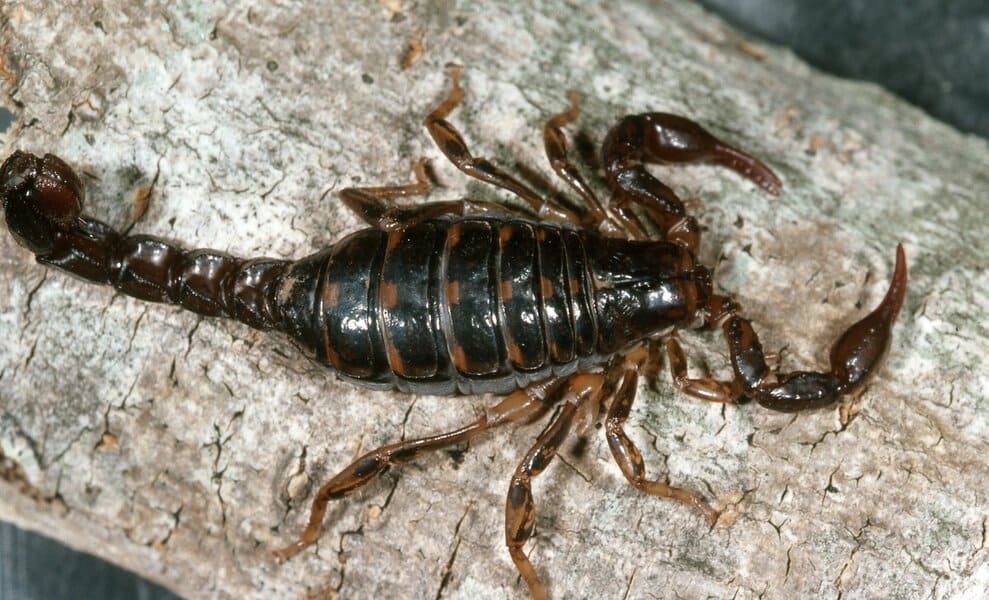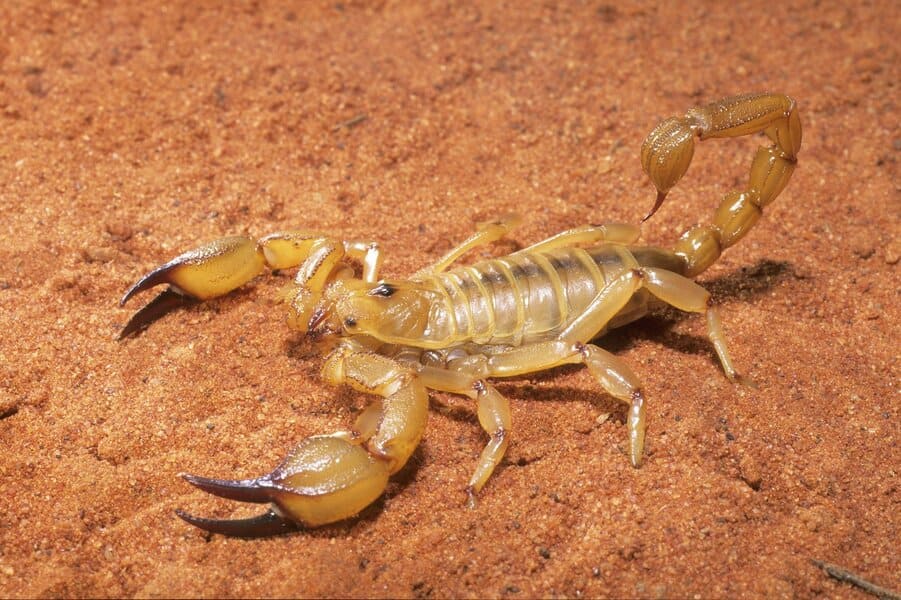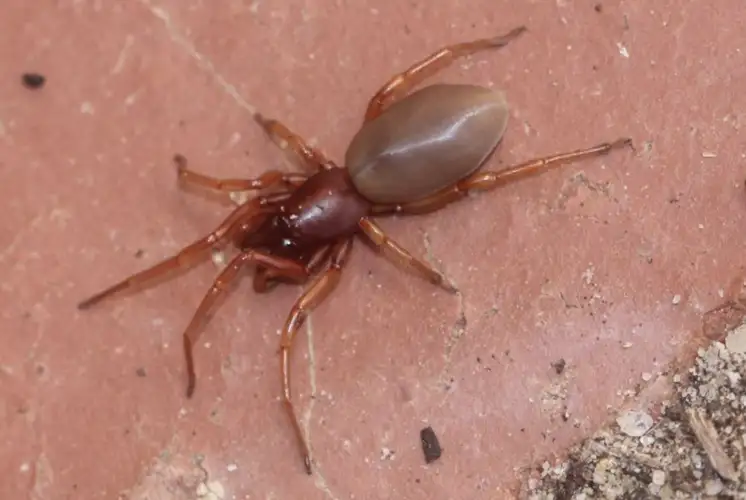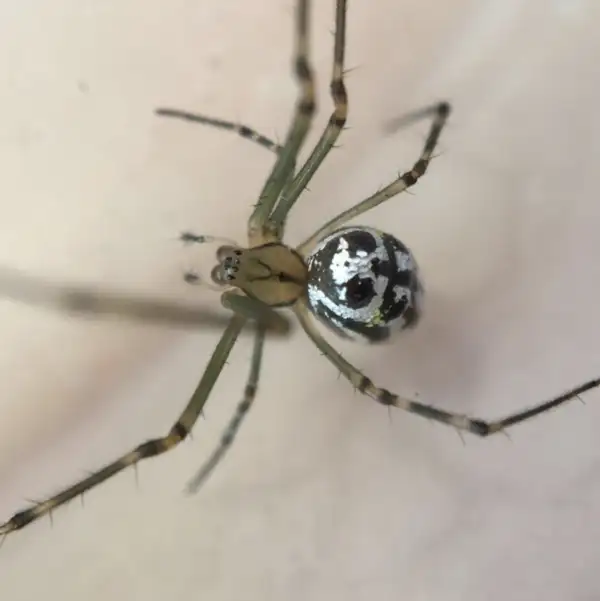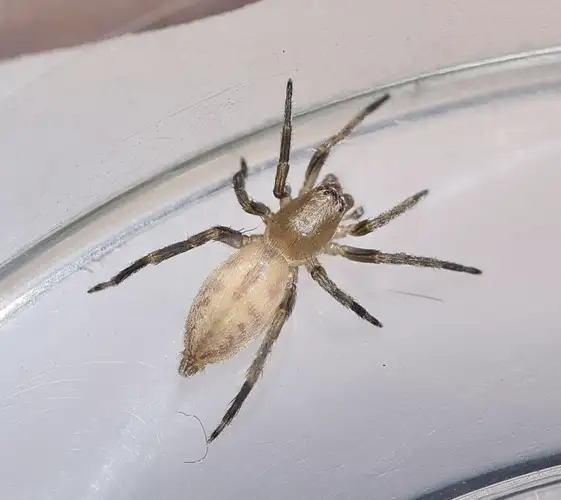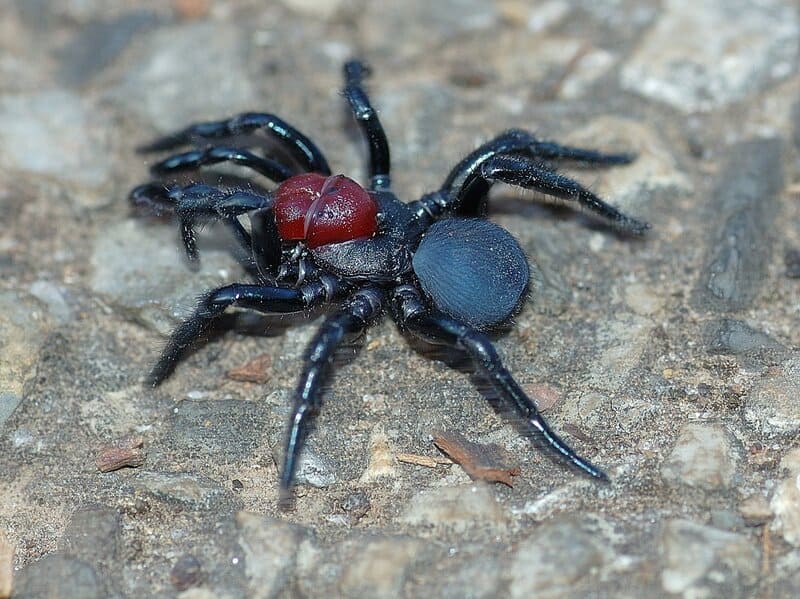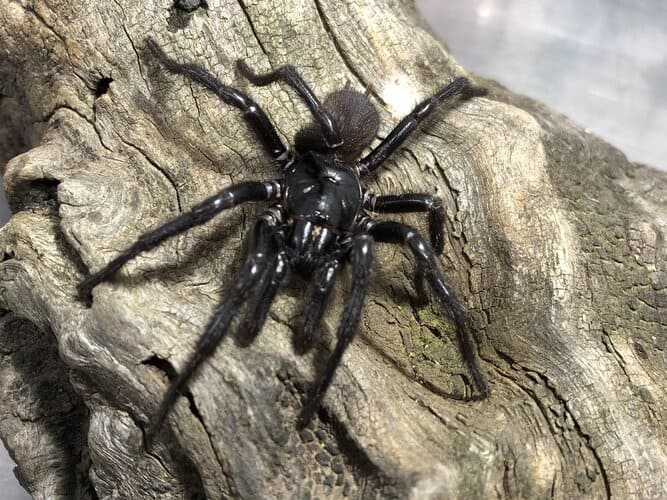Scorpions
IUCN
LCBasic Information
Scientific classification
- name:Scorpions
- Scientific Name:Order Scorpiones
- Outline:Arthropoda
- Family:Scorpiones Scorpions
Vital signs
- length:Most species about 2.5–12 cm long, with some large species exceeding 20 cm
- Weight:From a few grams to several tens of grams depending on species and individual size
- lifetime:Many species live 2–8 years; larger species in captivity may exceed 10–20 years
Feature
Ancient nocturnal arachnid predators with large pincers, a segmented tail and a venomous sting; bodies glow under UV light.
Distribution and Habitat
Found on all continents except Antarctica in deserts, grasslands, forests, rocky hills and around human settlements, especially in warm and dry regions.
Appearance
Compact body with robust pincers, four pairs of walking legs and a curved segmented tail ending in a sting; colours range from yellow and brown to almost black.
Details
scorpions.html">Scorpions are arachnids in the order Scorpiones and represent one of the oldest lineages of land-dwelling predators, with fossils dating back more than 400 million years. They are instantly recognisable by their large pincers, segmented “tail” and venomous sting, and play a key role as nocturnal predators in many dry and warm ecosystems.
Basic Biology
Taxonomic position: Phylum Arthropoda → Class Arachnida → Order Scorpiones
Species diversity: More than 2,500 species have been described worldwide, with new species still being discovered.
Size range: Most species are about 2.5–12 cm in length; a few large species can exceed 20 cm.
Life span: Many scorpions live 2–8 years in the wild, while some large species have been recorded living more than 10–20 years in captivity.
Morphology & Key Features
The scorpion body is divided into a prosoma (cephalothorax), mesosoma and metasoma:
Pincers (pedipalps): The enlarged pedipalps end in claw-like pincers used to seize and manipulate prey and for defence.
Walking legs: Four pairs of legs support walking and climbing.
“Tail”: The tail-like metasoma consists of a series of segments ending in a bulbous sting segment (telson) containing the venom gland.
Sting: The sharp sting at the tail tip delivers venom into prey or potential predators.
Most scorpions are coloured in shades of yellow, brown or black, which provide camouflage in sand, soil or rocks. A famous feature of scorpions is that their cuticle fluoresces under ultraviolet (UV) light, glowing blue-green or yellow-green.
Distribution & Habitat
Scorpions occur on every continent except Antarctica. They are most diverse in warm, arid and semi-arid regions, but various species inhabit many different environments:
Deserts and semi-deserts, hiding under rocks or in burrows;
Savannas, grasslands and rocky hillsides;
Tropical and subtropical forests, living in leaf litter and under logs;
Agricultural land and human settlements, where they may shelter in stone piles, woodpiles and wall crevices.
Behaviour & Diet
Scorpions are mainly nocturnal ambush predators. During the day they stay hidden in burrows or shelters and emerge at night to hunt. Their diet typically includes:
Insects such as cockroaches, crickets and beetles;
Other arthropods, including spiders and centipedes;
Small vertebrates such as lizards or young frogs in the case of larger species.
Scorpions detect vibrations and chemical cues in the environment using specialised sensory organs, such as the comb-like pectines on the underside of the body, allowing them to locate prey precisely in the dark.
Venom & Medical Importance
Scorpion venom is primarily used for subduing prey and deterring enemies. Its composition and potency vary widely among species:
For the majority of species, stings cause pain comparable to, or only somewhat worse than, a bee sting, with local redness and swelling but no serious systemic effects in healthy adults;
A relatively small number of species, mainly in North Africa, the Middle East, South Asia and parts of Latin America, are medically important and can cause severe neurotoxic symptoms, particularly in children and vulnerable individuals.
In regions where dangerous scorpions occur, antivenom and modern supportive care have greatly reduced the risk of fatal outcomes, but prompt medical attention after severe stings remains essential.
Human Connections
Scorpions feature prominently in mythologies, astrology (for example, the zodiac sign Scorpio) and traditional symbolism around the world. In contemporary science, components of scorpion venom are being studied as potential sources of novel medicines and bioactive compounds, including painkillers, anticancer agents and insect-specific toxins for targeted pest control.
To reduce the risk of stings in everyday life, people in scorpion-prone areas can:
Wear closed shoes at night and avoid walking barefoot outdoors;
Keep yards and campsites tidy, reducing piles of stones, wood or debris where scorpions can hide;
Check shoes, clothing and bedding before use, especially when travelling or camping.
References
M. S. Harvey & Yen, A.L. 1989. Worms to Wasps: an illustrated guide to Australia's terrestrial invertebrates. Oxford University Press: Melbourne.
Koch, L.E. 1977. The Taxonomy, Geographic Distribution and Evolutionary Radiation of Australo-Papuan Scorpions, Rec West Aust Mus: 5(2).
Locket, A.1994. Night Stalkers. Australian Natural History 24(9): 54-9.
Scorpions. WA Museum Leaflet.
Scorpions, Centipedes and Millipedes. Queensland Museum Leaflet.
Lawless, P. 1998. Lo what light…Wildlife Australia Magazine, Winter Edition. [article on scorpion fluorescence]
FAQ
Q1. How many species of scorpions are there?
More than 2,500 species have been formally described worldwide, with new species still being discovered, reflecting a wide range
of sizes, colours, habitats and venom properties.
Q2. Are all scorpions deadly?
No. Only a small minority of scorpion species are capable of causing life-threatening stings in humans. Most species cause
only local pain and swelling similar to a bee or wasp sting.
Q3. Why do scorpions glow under UV light?
Chemical compounds in the scorpion cuticle fluoresce under UV, making them glow blue-green or yellow-green. The exact biological
function of this fluorescence is still debated, but it is widely used by researchers to locate scorpions at night.
Q4. What should I do if I am stung by a scorpion?
Stay calm, wash the sting site, and seek medical advice. In areas where dangerous scorpions occur, or if the victim is a child
or develops severe symptoms such as difficulty breathing or muscle twitching, urgent medical treatment is essential.

